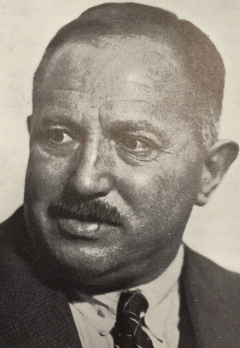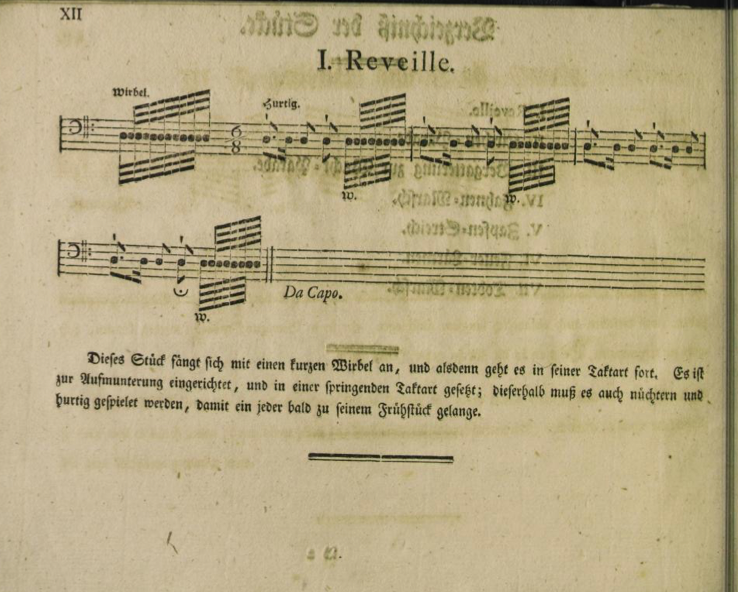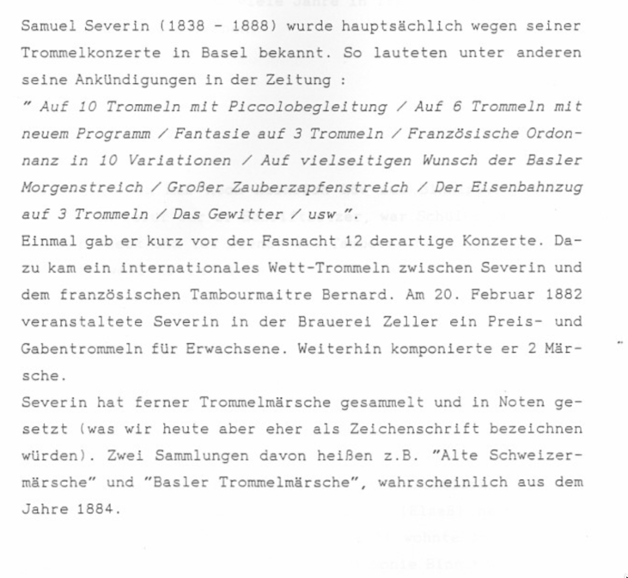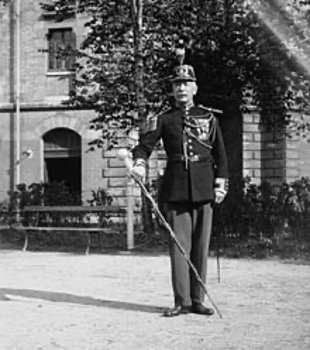Markus is reporting about his visit in Dijon
Origine of Swiss and French Drumsignals and Marches
1st Meeting of the SIRD “History Committee” on 27./28. April 2019 in Dijon (F)
Axel Chagnon (F), Olivier Mollon (F), Albi Bachmann (CH) and Markus Estermann (CH) met to exchange historical information. The aim was to deepen the historical connections between French and Swiss drum art. It was about some signals and marches.
The very good archiving in France and the great historical knowledge of those involved came into play. We can briefly record and document the following:
The following document by Axel Chagnon was found in the Saxon State Library / State and University Library Dresen IMSLP162870-PMLP291961.
Short instruction of playing the drum in the easiest way to learn. Berlin, printed on George Ludwig Winters Wittwe, 1771.
There are no older documents known to those present which show exactly this rhythm of the day watch.
Marches:
The historical marches from the collection of Dr. Fritz Berger (1895-1963) were examined. A letter from Dr. Fritz Berger to Gabriel Defrance (Drum Major of the Garde républicaine in Paris) from December 25, 1935 played an important role. This letter was found by Olivier Mollon at the Musée de l’armée in Paris.
The structure of the French marches can be found in the verses of the “Staikohle”. The first four bars are repeated in the following three bars plus final stroke.
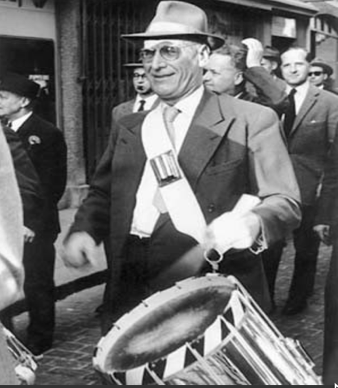
Doublé/Coup Anglais
Also mentions Dr. Fritz Berger various variations of Doublé which were also drummed in Basel.
On the Coup Anglais / Doublé question:
In Basel, the towing was duplicated in several variants. In the 1890 the following species were known in Basel:
- Two right tow with inserted left polka dot. A musical notation from 1754 gives us an idea of how to play.
- The “Gwängli” or coup anglais were also known 30 years earlier in Basel. (1905) like the way to double with 8th tow. It is exactly drag and polka dot (flamtap) as the English and especially the Scots do. Here a right tow followed by a right polka dot and vice versa.
- 3. a third type is called “les frisés”, 3 simple spots, left, right and left and vice versa, very contracted with the accent on the last beat (main stroke)
- 4. Finally, the “coup-anglais-Français” (French doublé) as we have been playing it in the Basel section for around 50 years (around 1885). Right drag, polka dot left, left drag, right polka dot with the emphasis on the tow.
- 5. It remains to be said that there used to be other types such as tripler / triolet, quatripler with mill like a quintripler with a 5 call. The 8th notes sounded with the 3 calls, your day waxing streak and also struck with a long swirl of several reels, while the choir beat the drag very clearly.Auch erwähnt Dr. Fritz Berger diverse Variationen von Doublé die auch in Basel getrommelt wurden.
Another important person for the connection between the French drums and the Basel drums was Joseph Wintzer (1882 – 1940). He was trained by the drums Charles Schmitt (1854 – 1936), Emil Frick, Antoine Tscheberle and his uncle Jacques Wintzer (1901 Drum of the Garde Républicaine). In a letter from 1924 to the chairman of the “Ueli” drum group, he described himself as the “long-standing drum of the Garde Républicaine”. In 1912 he published his drum book for the drum school of the Basel Wednesday Society. In it we find 2 marches of the Garde Républicaine and, as a specialty, the “Näpeli with tremor” and a “Day watch with tremor”. He also performed 21 different rudiments.
